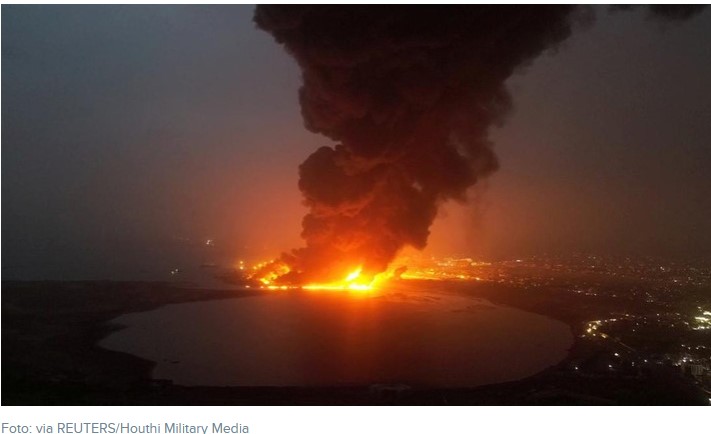
STRATEGIC ASSESSMENT. The sense of optimism following the operation targeting the elusive terrorist leader, the individual held responsible for the 9/11 attacks, was palpable. During this same period, protests swept through North Africa and the Middle East, an “Arab Spring” heralding the promise of change in regions long plagued by sclerotic governance, militarization and violent extremism. But with the U.S. committed to withdrawing its remaining troops from Afghanistan following President Biden’s recent announcement, there is little optimism to be found.
In announcing his plans to withdraw from Afghanistan, President Biden suggested that “our reasons for remaining in Afghanistan are becoming increasingly unclear” and al-Qaeda was “degraded.” But his characterization of al-Qaeda is merely a reminder of our reasons for remaining in Afghanistan. The group is degraded, not defeated, and the loss of its charismatic leader a decade ago has not proved effective in destroying the group that killed nearly 3,000 Americans and countless innocent people worldwide in the two decades since. Its leadership has been decimated by an aggressive drone campaign that hunted high-ranking militants in Somalia, Pakistan, and Yemen. Al-Qaeda’s ability to launch external operations and spectacular attacks has been significantly curtailed. And a long-running feud with its chief jihadi rival, the Islamic State, has led to defections and splintering. Yet despite this, al-Qaeda has proven remarkably durable and highly adaptive, a reminder that it has always sought to play a long game.
According to some estimates, al-Qaeda commands the allegiance of between 30,000 and 40,000 fighters worldwide. Its affiliates in the Sahel and the Horn of Africa have generated significant momentum over the past several years. In January 2020, al-Shabaab militants attacked Camp Simba in Manda Bay, Kenya, killing one U.S. servicemember and two American contractors. Then in December, the U.S. Department of Justice announced that a Kenyan Shabaab operative had been arrested in the Phillipinesfor “conspiring to hijack aircraft in order to conduct a 9/11-style attack in the United States.” Al-Qaeda in the Arabian Peninsula (AQAP), the organization’s Yemeni affiliate, has been hobbled, but remains among al-Qaeda’s most operationally capable franchise groups. AQAP has consistently demonstrated a desire to strike aviation targets, and was responsible for several high-level attacks in Saudi Arabia in 2019, AQAP was also implicated in the terrorist attack that killed three U.S. Navy sailors at a military base in Pensacola, Florida. Ongoing conflict in Yemen further extends the opportunities for terrorist groups to exploit the disorder.
Al-Qaeda has reoriented its strategy to focus more on making inroads with tribes and clans, harnessing the power of local and regional grievances in failed states and ungoverned territories, and introducing a global agenda where opportunities arise. While the U.S. and its allies concentrated on dismantling the Islamic State’s caliphate, al-Qaeda was “quietly and patiently rebuilding” its worldwide network as Bruce Hoffman has noted. A U.S. troop withdrawal from Afghanistan has the potential to breathe new life into al-Qaeda, much in the same way an American withdrawal from Iraq in 2011, dictated by a timetable and not conditions on the ground, led to the emergence of the Islamic State. A recent United Nations report suggests that al-Qaeda only has several hundred fighters currently in Afghanistan. But following a U.S. withdrawal, and the potential for the Taliban to dominate large swaths of Afghanistan militarily, al-Qaeda could be presented with the opportunity it needs for growth.
The Taliban has never broken with al-Qaeda, neither publicly or in private, and al-Qaeda fighters remain embedded in Taliban units. Furthermore, in addition to what can be described as al-Qaeda “core” or “central” operating in Afghanistan and Pakistan, al-Qaeda also has branches elsewhere in South Asia, including India. If Afghanistan descends once again into civil war, the Taliban could welcome foreign fighters to bolster its ranks, making South Asia a magnet for jihadists worldwide. And with no U.S. troop presence on the ground, Washington and its allies will be forced to rely on an offshore counterterrorism strategy with serious limitations.
Rumors have swirled for months that al-Qaeda’s current leader, Ayman al-Zawahiri, is dead. With numerous other high profile al-Qaeda figures eliminated over the past several years, including Hamza bin Laden, Osama’s son, and longtime veteran Abu Muhammad al Masri, many believe that its emir in waiting is Saif al Adel, currently believed to be in Iran. The death of Osama bin Laden was an important milestone for the United States. But tactical victories should not be confused with strategic objectives. We should not fool ourselves into thinking that bin Laden’s death signaled the end of al-Qaeda or the global jihadist movement more broadly. The United States went to war in Afghanistan in 2001 to destroy the terrorist group responsible for the worst terrorist attack on American soil in history. A decade after the death of Osama bin Laden, al- Qaeda remains a threat, one which could metastasize following the U.S. withdrawal. Biden is hoping that al-Qaeda can be contained, but history has often proven otherwise (TSC).





